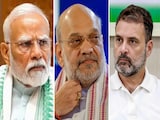Government schools remain the backbone of school education in India, accounting for 55.9 per cent of total student enrolment, according to the recently released Comprehensive Modular Survey (CMS) on Education, 2025, conducted as part of the 80th round of the National Sample Survey (NSS). The survey, covering 52,085 households and 57,742 students, highlights trends in household expenditure on school education between April and June 2025.
In terms of average annual expenditure per student on school education by state or union territory, cities in Haryana spend Rs 37,148 per student, while parents in Delhi spend Rs 20,411. In Uttar Pradesh, the average expenditure is Rs 19,795, Himachal Pradesh records Rs 39,550, and Chandigarh leads at Rs 49,711 per student.
Among southern states, the average annual expenditure per student is Rs 26,078 in Andhra Pradesh, Rs 28,951 in Tamil Nadu, Rs 30,848 in Telangana, and Rs 33,962 in Karnataka.
The data shows that rural areas have higher reliance on government schools, with 66 per cent of students enrolled, compared to 30.1 per cent in urban areas. Private unaided schools accounted for 31.9 per cent of total enrolments nationwide.
The survey also revealed that a majority of government school students pay minimal fees. Only 26.7 per cent of students in government schools reported paying course fees, compared with 95.7 per cent in non-government schools. In urban private unaided schools, the share rises to 98 per cent, whereas rural government schools see only 25.3 per cent of students paying fees.
Household expenditure per student varies sharply between government and non-government schools. Families spend an average of Rs 2,863 per student in government schools, while spending in non-government schools rises to Rs 25,002 annually. Across all schools, course fees constitute the largest expense, averaging Rs 7,111 per student nationwide, followed by textbooks and stationery at Rs 2,002.
Urban households spend significantly more, with course fees averaging Rs 15,143, compared to Rs 3,979 in rural areas.
Private coaching is another major expense, with 27 per cent of students participating during the academic year. The incidence of coaching is higher in urban areas (30.7 per cent) than rural (25.5 per cent). Household expenditure on coaching also rises with education level, reaching Rs 9,950 for higher secondary students in urban areas, compared to Rs 4,548 in rural areas.
According to the survey, funding for school education mainly comes from family sources, with 95 per cent of students reporting that household members are the primary financiers. Only 1.2 per cent cited government scholarships as their main source of support.





